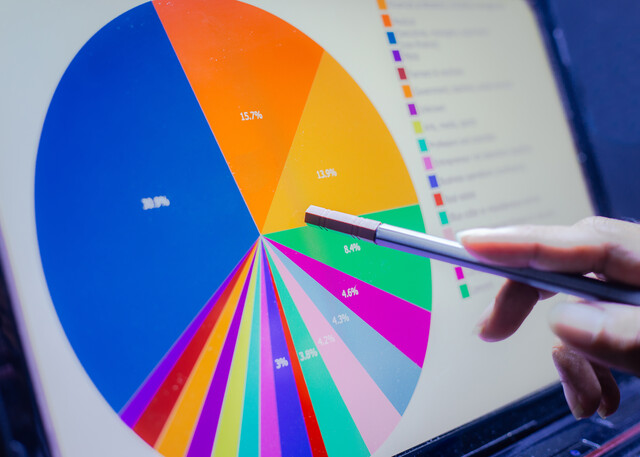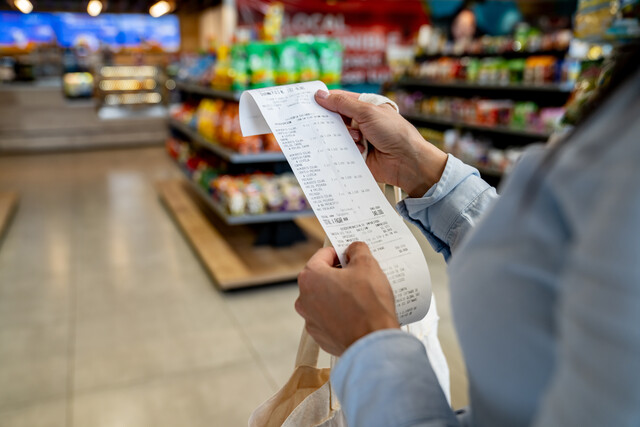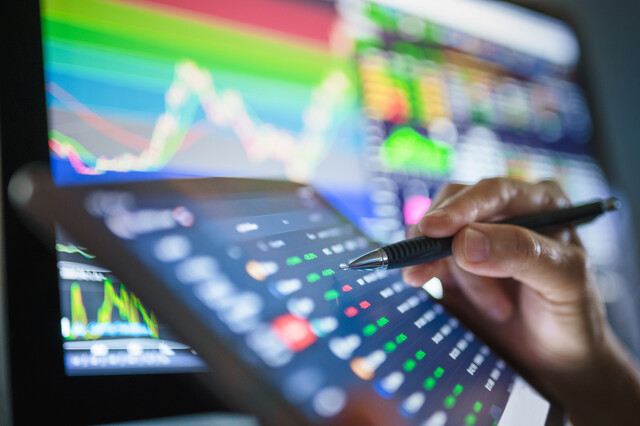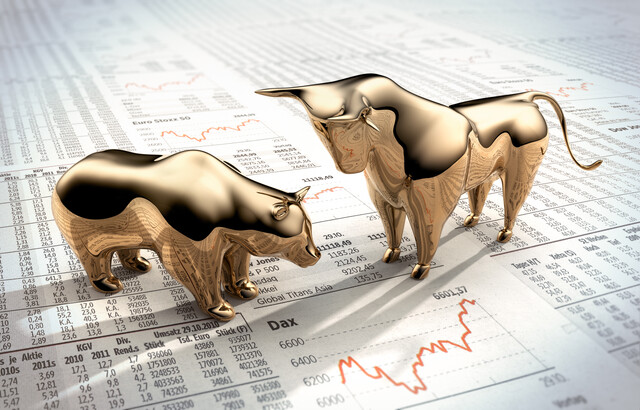This article covers the two primary trading strategies: fundamental and technical. We discuss the supply/demand equation, along with technical indicators that appear through charts. We also examine spread trading techniques.
|
Fundamental Strategy
|
Supply > Demand = Lower Prices
Demand > Supply = Higher Prices
The supply of commodities includes any amount carried over from a prior year's production added to the current year's output. Carryover stock, number of acres planted, labor availability, crop disease, weather and technological advances all affect the supply levels. If supply contracts prices usually move higher. When prices move higher it creates incentive for producers to increase production, which in turn creates more supply. The availability of commodities and the rate that dealers produce finished goods to meet demand will influence pricing; overproduction leads to lower prices, underproduction during high demand pushes prices higher.
On the demand side, consumption drives prices. Consumers make choices among alternatives and their responses to price changes are reflected within the markets. At the point where either consumption shrinks or the commodity level expands beyond consumption levels, the price will begin to fall. Demand typically begins rising once the price reaches a low point, sending prices back up again.
For financial futures, supply and demand shift based upon factors such as interest rate adjustments, currency exchange rates and/or company stock performance, among other variables. Contracts on indices (like the S&P 500), stocks, bonds and other instruments compete against each other for investors' attention, influencing bid and offer prices. The fundamental strategist analyzes investor sentiment and the number of contracts available when trading financial futures.
|
Technical Strategy
|
Traders using a technical strategy base their decisions on data and signals observed through price charts. Chart analysis (also called charting) relies on the theory that market action can predicted by signals displayed within the chart. There are three primary assumptions that a chartist makes:
-
The market reflects fundamental data (this is called discounting) within its price movement, volume traded and open interest
-
Prices usually move in trends � a persistent direction, either up, down or sideways
-
Patterns are repeated throughout history because human behavior and trading psychology are expressed through price movement patterns
|
Risk Management
|
|
Spreads
|
-
Calendar spread � Going long and short on the same futures contract but different delivery month;
-
Intercommodity spread � Going long on a future in a given delivery month and short on the same commodity and delivery month but in a different futures market. Examples include a crack spread (crude oil vs. unleaded gas) and a crush spread (soybean meal vs. soybean oil); and
- Intermarket spread � Going long on a futures contract on one exchange and short on the same contract with the same delivery month on another exchange. For example, a purchase of a May CBOT Corn and sale of a KCBOT Corn is an intermarket spread. The objective is to gain more from the sale than the cost of the purchased contract.
A trader uses tools to accomplish certain tasks. For example, to keep informed about financial futures she reviews the US Treasury website. To analyze technical indicators, she uses Tradestation�. For many traders, using a trading system is an important tool for being successful. A trading system is a disciplined approach to making trading decisions. A system is designed to follow market action and provide logical signals using indicators and patterns as a guide for making trade decisions.
It is important to note that systems do not guarantee success, nor do they completely remove the elements of risk and loss. Although professional traders have developed technical, repetitive systems built upon historical data, the fact remains that the markets as a whole have proven to be relatively unpredictable. The changing forces that shape trading sentiment can move trends in opposing directions swiftly. However, there are tangible benefits to using a system when you trade futures contracts:
� Establish a disciplined trading approach
� Base decisions upon tested theories and research
� Make trading decisions based on objective signals absent of emotional biases (fear, greed, etc.)
Systems automatically signal the exact points to enter and exit a trade. The system's timing makes the difference between wins and losses. It is based on a set of rules that define the timing and the number of open positions trader will maintain. One downside to using a system is that it prevents your ability to use judgment based upon fundamental data that can be uncovered at inconsistent times.
Another benefit to using a system is transparency. Most computer programs allow a trader to easily see all open positions, usually along with account balance, margin requirements and other important data. Liquidity is enhanced through a system because many can generate immediate deposit and withdrawal activity from cash accounts or other sources.
| System Development |
1. What is your risk tolerance? Risk tolerance refers to the amount you are willing to lose for each trade. It is best to be consistent when making trade decisions: this means continuing to have an open position if the price "moves against you". A protective stop order can prevent significant loss in this case. Be careful not to set an offsetting limit order too close to your entry point because you could get "closed out" at a loss if the price hits that level quickly.
2. Which markets will you trade? Some markets trade quickly while others may take days to see activity. Your risk tolerance will influence which markets to trade. For example, you likely won't trade in a market with a daily trading range of $2000 if you are only willing to risk $500.
3. How long do you wish to hold your position? Some indicators and patterns work better for short-term positions while others are better for long-term positions. Some systems are based upon lagging indicators that take time for signals to develop.
Traders often use an automated, computer-based program that analyzes historical and real time price data. The software can generate specific entry and exit signals when market conditions exist. It operates on strict rules, strategies and indicator types. With these programs you can often trade different markets simultaneously without doing a large amount of research.
A primary requirement of a solid trading system is for the trader to determine an appropriate risk/reward ratio. This calculation should be based upon your risk tolerance. Remember that your risk/reward ratio is a measurement that compares the amount you are willing to commit to the trade against the return that you expect. For example, if you go long a soybean contract at $100, setting a stop-loss sell order at $95, and you expect it to rise to $110, there is a 2:1 risk/reward ratio ($5 loss versus a $10 return). By setting risk tolerance and expected return targets, the system becomes more automated and repeatable.
Money management is critical to a trading system. One important method of money management is using a trailing stop-loss technique. This step protects you from large losses during price fluctuations and preserves your gain if prices move in the direction you expect. By simply setting an offsetting stop-loss order at an exact percentage from the market prices as the price moves in your favor, you can often avoid losing more than your risk tolerance target will allow.
There are several system styles but most are based upon one of three trend-following time frames:
� Day trading � this system works for highly liquid, fast moving futures, such as index or currency contracts. The premise is that no position will be held overnight. It looks for an opportunity to make a gain in a short period of time; however, signals are not given daily as optimal markets may take days to "set up" a trade scenario.
� Swing trading � this system looks for situations where a trader might be in a position for an intermediate term (several days to weeks). The approach is to look for a reversal from a previous trend, "ride the wave" for a short time, exit the position and then enter again when the trend reverses back. This type also works most effectively with highly liquid contracts.
� Trend following � These are classic systems that have been around the longest. They search for continuation or reversal patterns following signals that indicate a breakout or breakdown; once a position is taken, the trader holds on throughout the trend until a reversal is signaled.
| System Strategies |
Moving Average � Open a position when the price breaks through the 30-day moving average. Usually prices trend upward following a breakout. Choose an MA that matches your timeline for remaining in an open position; the longer you wish to remain open, the longer the MA you pick.
Example: Contract market price = $500 30-day MA = $502 Risk/Reward = 3:1
Place a buy order at $503 with a sell stop at $495
When price moves to $527 sell contract
Pullback � Following a breakout from a previous trend, open a position when prices return to the previous resistance level (which should be the new support level). Usually prices surge out of a breakout or breakdown then pull back to a new support or resistance level before returning in the prior direction.
R/R = 2:1
Place a buy at $195 with a sell stop at $175
When price moves to $235 sell contract
Trend Reversal � Following a chart pattern such as a head and shoulders[1] , open a short position when prices fall below the support line that connects the troughs between the two shoulders. Prices tend to decline following a breakdown from the support level.
Example: Price = $325 and falling Support level = $315 R/R = 3:1
Place a sell at $314 with a buy stop at $320
When price moves to $296 buy contract
Accumulation/Distribution � Open a position once momentum shows that trade patterns indicate trader sentiment is not in line with price action. For example, while prices are falling there may be several days where more traders are buying than selling. Prices tend to reverse once when there is a divergence between price trends and the flow of money in and out of the contracts.
Example : Price = $250 and falling A/D line = $255 trending up R/R = 2:1
Place a buy at $252 with a sell stop at $245
When price moves to $266 sell contract






























